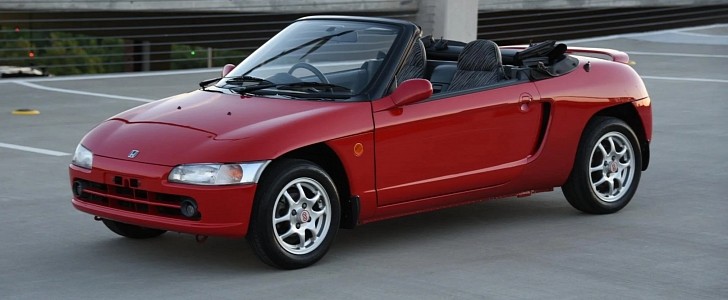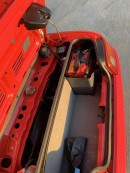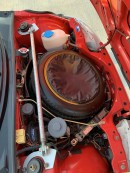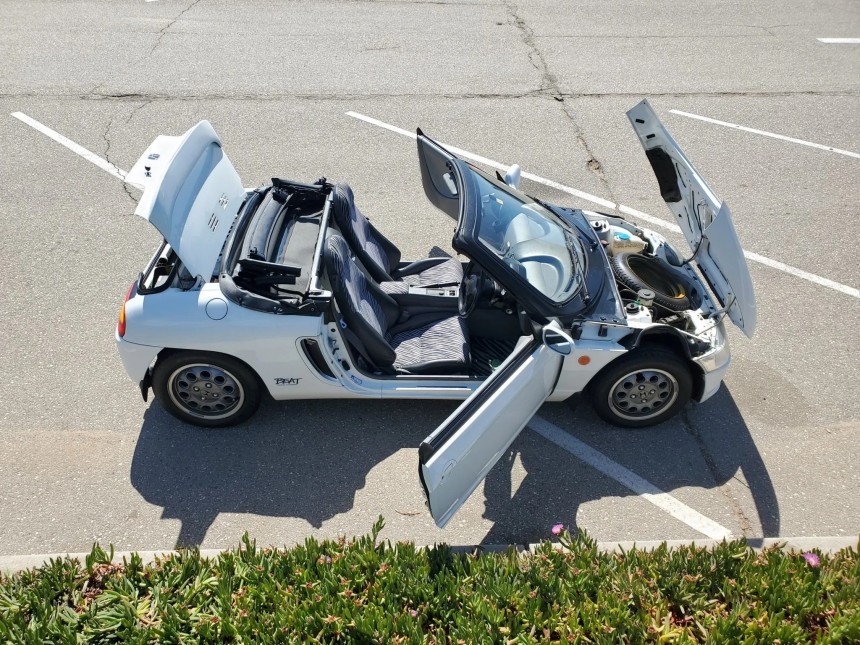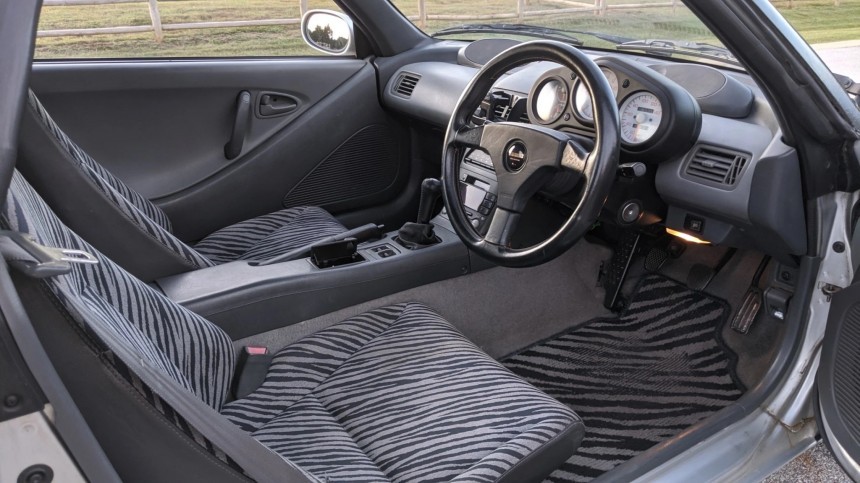In the aftermath of WWII, the Land of the Rising Sun was a shadow of its former self. When most Japanese couldn’t afford a car but many had enough money to purchase a bike, the government decided that it was high time for automakers to explore the keijidosha (light car) concept.
Originally limited to 150-cc engines in 1949, this vehicle category leveled up to 360-cc engines in 1955. The following era saw displacement increase to 550 cubic centimeters in 1976 due to steadily declining sales. The modern kei car traces its roots back to the latter period of the Japanese asset price bubble, which is defined by unrealistic real estate and stock market prices.
By allowing a displacement of 660 cubic centimeters and an extra 100 millimeters of overall length, a number of Japanese automakers thought that sporty kei cars would be an interesting addition to an otherwise dull vehicle category. This is when the Suzuki Cappuccino launched, a rear-drive and front-engine roadster, together with the offbeat Honda Beat (pun intended).
Styled by Italian design firm and coachbuilder Pininfarina, the Beat predates the Cappuccino by half a year. The even more offbeat Mazda Autozam AZ-1 arrived in January of 1992, eight months after Honda’s little roadster.
Inspired by small-displacement sporty thrillers from the automaker’s past, including the S500 of 1963, the Beat is a two-seat roadster with a twist. A mid-engine twist explained by the NSX (New Sportscar eXperimental) that started out as the HP-X Concept (Honda Pininfarina eXperimental) in 1984.
Featuring a steel monocoque with a 2,280-millimeter wheelbase, the cutesy Beat is rocking a pint-sized fuel tank on the right side of the engine compartment. Because of the 24-liter fuel tank, the 656-cc engine had to be offset to the left. Codenamed E07A and mounted transversally, the three-cylinder lump was offered exclusively with a five-speed manual gearbox.
Augmented with MacPherson struts and coil springs on either axle, plus an anti-roll bar up front for better handling in the corners, the soft-topped Beat came in two main specifications. The base PP1-100 didn’t have anti-lock brakes, but the PP1-110 did. Both variants were originally equipped with 213- and 238-millimeter solid disc brakes and 10-hole steel wheels that measure 13 by 4.5 inches at the front and 14 by 5.0 inches for the rear axle.
Constructed from die-cast aluminum, the E0-series powerplant is gifted with MTREC. This multi-throttle responsive engine control system comprises three throttle bodies, one for each cylinder, for improved throttle response. Shared with the Honda Today front-wheel-drive hatchback, this mill is running a 10.0:1 compression ratio and Programmed Fuel Injection.
PGM is a proprietary electronic fuel injection system with port injection that premiered in 1982 with a V-twin motorcycle, the ultra-collectible CX500 Turbo that fueled an arms race among the Big Four of the Japanese motorcycle industry (make that Honda, Suzuki, Yamaha, and Kawasaki). The Beat is much obliged to crank out 63 free-breathing horsepower (64 ps) at 8,100 revolutions per minute and 44 pound-feet (60 Nm) of torque at 7,000 rpm.
Penned by Pavel Husek, a Czechoslovak designer who was then based in Germany, the Beat keeps cool with the help of two slim ducts behind each door and front-mounted radiators. The black windshield frame gives the car a dynamic look, perfectly complementing the manually-operated soft top.
From an aesthetic standpoint, the interior would’ve been described as boring had it not been for the zebra-print fabric upholstery on the seats, floor mats, and center console. In terms of extras, the options list includes a leather-wrapped steering wheel, stainless-steel exhaust finisher, 10-hole alloys, a rear spoiler, a stereo, a luggage rack, luggage net, and mud flaps.
The PP1-110 also differs from the PP1-100 by means of a limited-slip differential. Honda quotes an electronically-governed top speed of 134 kilometers per hour (83 miles per hour), well within the Japan Automobile Manufacturers Association’s 140 kilometers per hour (87 miles per hour).
100 kilometers per hour (62 miles per hour) takes in excess of 13 seconds, which is alright for an undersized engine motivating a car that weighs 760 kilograms (1,676 pounds). From May 1991 through February 1996, a grand total of 33,635 units were manufactured. The Beat was replaced in 2015 by the S660, a targa-topped kei sports car with a turbocharged three-pot.
By allowing a displacement of 660 cubic centimeters and an extra 100 millimeters of overall length, a number of Japanese automakers thought that sporty kei cars would be an interesting addition to an otherwise dull vehicle category. This is when the Suzuki Cappuccino launched, a rear-drive and front-engine roadster, together with the offbeat Honda Beat (pun intended).
Styled by Italian design firm and coachbuilder Pininfarina, the Beat predates the Cappuccino by half a year. The even more offbeat Mazda Autozam AZ-1 arrived in January of 1992, eight months after Honda’s little roadster.
Inspired by small-displacement sporty thrillers from the automaker’s past, including the S500 of 1963, the Beat is a two-seat roadster with a twist. A mid-engine twist explained by the NSX (New Sportscar eXperimental) that started out as the HP-X Concept (Honda Pininfarina eXperimental) in 1984.
Augmented with MacPherson struts and coil springs on either axle, plus an anti-roll bar up front for better handling in the corners, the soft-topped Beat came in two main specifications. The base PP1-100 didn’t have anti-lock brakes, but the PP1-110 did. Both variants were originally equipped with 213- and 238-millimeter solid disc brakes and 10-hole steel wheels that measure 13 by 4.5 inches at the front and 14 by 5.0 inches for the rear axle.
Constructed from die-cast aluminum, the E0-series powerplant is gifted with MTREC. This multi-throttle responsive engine control system comprises three throttle bodies, one for each cylinder, for improved throttle response. Shared with the Honda Today front-wheel-drive hatchback, this mill is running a 10.0:1 compression ratio and Programmed Fuel Injection.
PGM is a proprietary electronic fuel injection system with port injection that premiered in 1982 with a V-twin motorcycle, the ultra-collectible CX500 Turbo that fueled an arms race among the Big Four of the Japanese motorcycle industry (make that Honda, Suzuki, Yamaha, and Kawasaki). The Beat is much obliged to crank out 63 free-breathing horsepower (64 ps) at 8,100 revolutions per minute and 44 pound-feet (60 Nm) of torque at 7,000 rpm.
From an aesthetic standpoint, the interior would’ve been described as boring had it not been for the zebra-print fabric upholstery on the seats, floor mats, and center console. In terms of extras, the options list includes a leather-wrapped steering wheel, stainless-steel exhaust finisher, 10-hole alloys, a rear spoiler, a stereo, a luggage rack, luggage net, and mud flaps.
The PP1-110 also differs from the PP1-100 by means of a limited-slip differential. Honda quotes an electronically-governed top speed of 134 kilometers per hour (83 miles per hour), well within the Japan Automobile Manufacturers Association’s 140 kilometers per hour (87 miles per hour).
100 kilometers per hour (62 miles per hour) takes in excess of 13 seconds, which is alright for an undersized engine motivating a car that weighs 760 kilograms (1,676 pounds). From May 1991 through February 1996, a grand total of 33,635 units were manufactured. The Beat was replaced in 2015 by the S660, a targa-topped kei sports car with a turbocharged three-pot.
